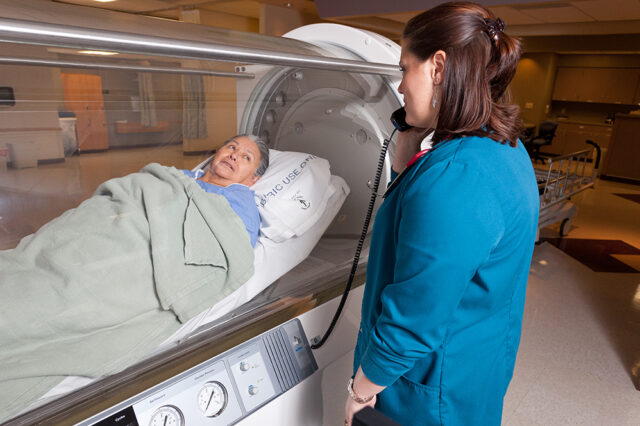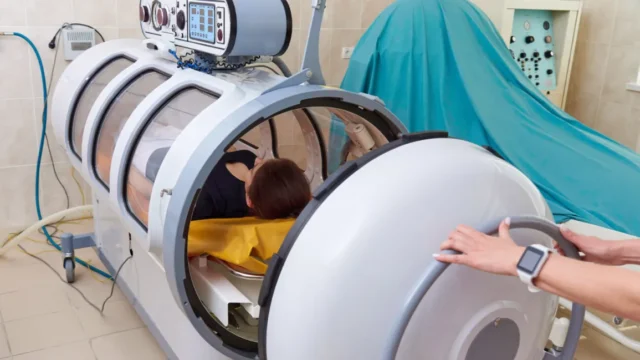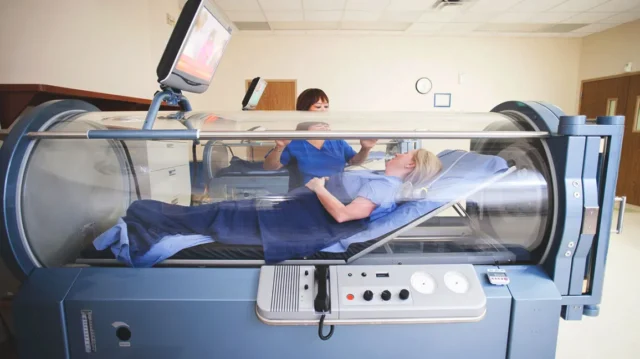
Burns can be really painful, no matter how small or big. But you can quickly treat them by placing a cold compress over them. It’s surprising, isn’t it, how our body heals by itself within a few days whether or not you treat the wound? Well, it’s a blessing for people whose injuries heal themselves because not every person is that lucky.
If you’re someone who has been treating your wound for more than a week only to find it isn’t healing, you’re at the right place. Here we will tell you about an effective procedure that quickens the healing so you can quickly get back to what you were doing before.
But why does would healing takes so much time in some people?
During the healing process, our body’s red blood cells carry new cells to the site to rebuild the tissues. But it can slow down because of poor blood circulation, taking much longer time for the wound to heal. Chronic conditions, such as obesity and diabetes, also cause poor blood circulation inside the body.
However, it is also delayed by factors local to the wound, such as maceration, edema, trauma, pressure, necrosis, desiccation, and infection. Besides, Vitamin C deficiency, poor nutrition, age, and lack of hydration can also delay wound healing. But you can speed up that process with the help of Hyperbaric Oxygen Therapy (HBOT) treatment.
What is Hyperbaric Oxygen Therapy (HBOT) Treatment?

During an injury recovery process, two parts of our cells need O2: the mitochondria, aka the powerhouse of cells, and the stem cells, aka the body’s repair system. HBOT is a quick and effective way to deliver the required quantities of oxygen to these body parts and even go beyond the arteries with the aid of a particular pressure enclosure.
HBOT is a therapeutic procedure with zero needles and incisions to treat an injury. The patient only needs to get in a hyperbaric chamber and lay there for two hours. It helps benefit the body by carrying more O2 to the organs and tissues requiring healing, thus supporting the procedure.
When this treatment was introduced, it was usually employed by undersea medical experts to minister to deep-sea divers who formed decompression illness or bends. But today, it is used to minister various ailments, from burns to carbon monoxide infection.
This therapy helps benefit several conditions, whether a regular daily healing operation, such as a claw ulcer, chronic radiation damage, or an emergency, such as a carbon monoxide infection. It can also benefit other diseases, such as skin grafts, frostbite, bone disorders, anemia, and burns.
Now that you know what Hyperbaric Oxygen Therapy (HBOT) is, let’s discuss what it is like to be inside the enclosure.
Laying Inside the Hyperbaric Oxygen Chamber:

If you’re planning to get an HBOT treatment for the first time, it is essential to learn about the experience, especially if you’re claustrophobic.
Although being inside the Hyperbaric O2 Chamber is similar to lying in your bed, only that you’re inside a glass cylinder can make some people uncomfortable. It could be a strange feeling since the environment is tightly closed. But there’s nothing to be afraid of since specialists surround you, and the glass cylinder is adaptable.
You can also enjoy watching the television outside the chamber, and if you experience any discomfort, you can always speak to the technician standing about a foot away from you.
During Hyperbaric Oxygen Therapy (HBOT), the patient breathes in pure O2 in highly pressurized conditions. Inside the enclosure, a patient lies on a bench while the quantity of O2 in their blood is gradually raised to allow the wounds to heal faster. It is a practical approach to improve the O2 supply in the body, reduce swelling, and stop infections from spreading to other body parts.
The pressure is kept between 1.5 and 3 times more than normal air pressure. Some individuals may experience pressure in their ears, identical to flying in a plane.
Fortunately, you can quickly ease this sensation by yawning, gulping, and opening and closing your mouth. Since it is not a single-session process, you must prepare yourself for what’s to come by getting used to it.
Two common types of Hyperbaric Oxygen Chambers options provided by oxyhelp.com includes the following:
- Single Unit: Also known as the Monoplace unit, it is created for a single individual to lay on a bench moving into a plastic enclosure.
- Several Units: It is designed for multiple people, imitating a huge clinic room. Here the patients obtain O2 via a mask covering their faces or a transparent hood on their heads.
You may have to dedicate a significant part of your life to the treatment, which can be two hours, usually carried out five days a week for around two months. The commitment will help you get familiarized with the operation, acquaint people, and discover ways to pass the duration while inside the chamber. It will certainly put a wrench in your daily routine at first, but it is worth it in the long run regarding wound healing.
Parting Thoughts

During HBOT operation, the patient rests on a bench in a confined enclosure for as long as two hours, inhaling O2. Since the force is so elevated, some individuals may experience distress while inside it, including ear pain.
Oxygen poisoning is real, and it can severely affect your health. So, to prevent it, one must take frequent pauses during the remedy to breathe in normal air. It will prevent the body tissues from collecting excess O2. As a healthcare provider, you must also carefully determine the ideal O2 dosage delivered to each patient during the procedure, considering their age, overall condition, and issues.
And being a sufferer, you should consider getting cared for by certified and experienced medical personnel who monitors you throughout your treatment inside the therapy unit. Being cautious will help prevent side effects or complications, such as lung damage, sinus damage, middle ear burst, fatigue, or oxygen poisoning.







